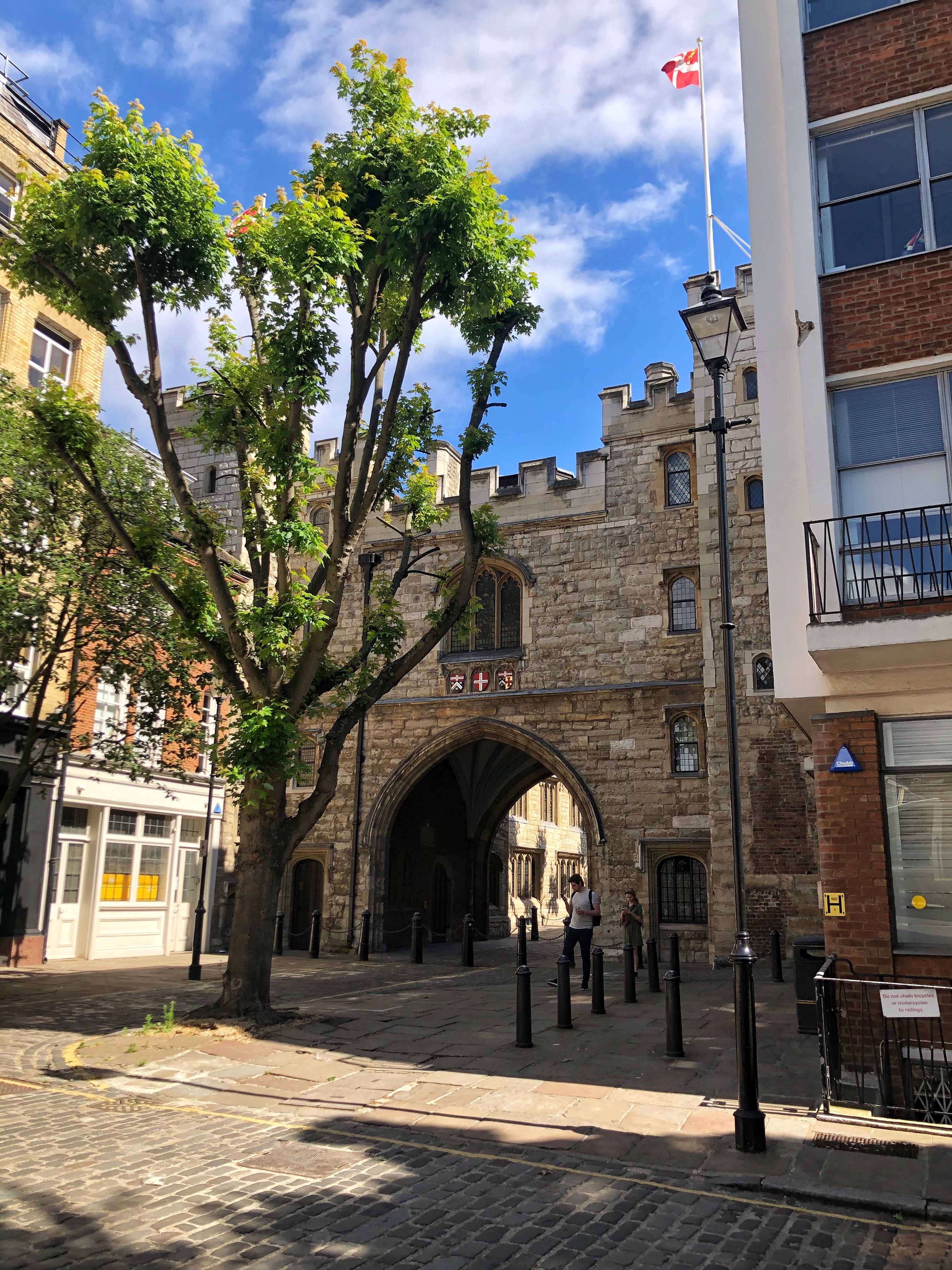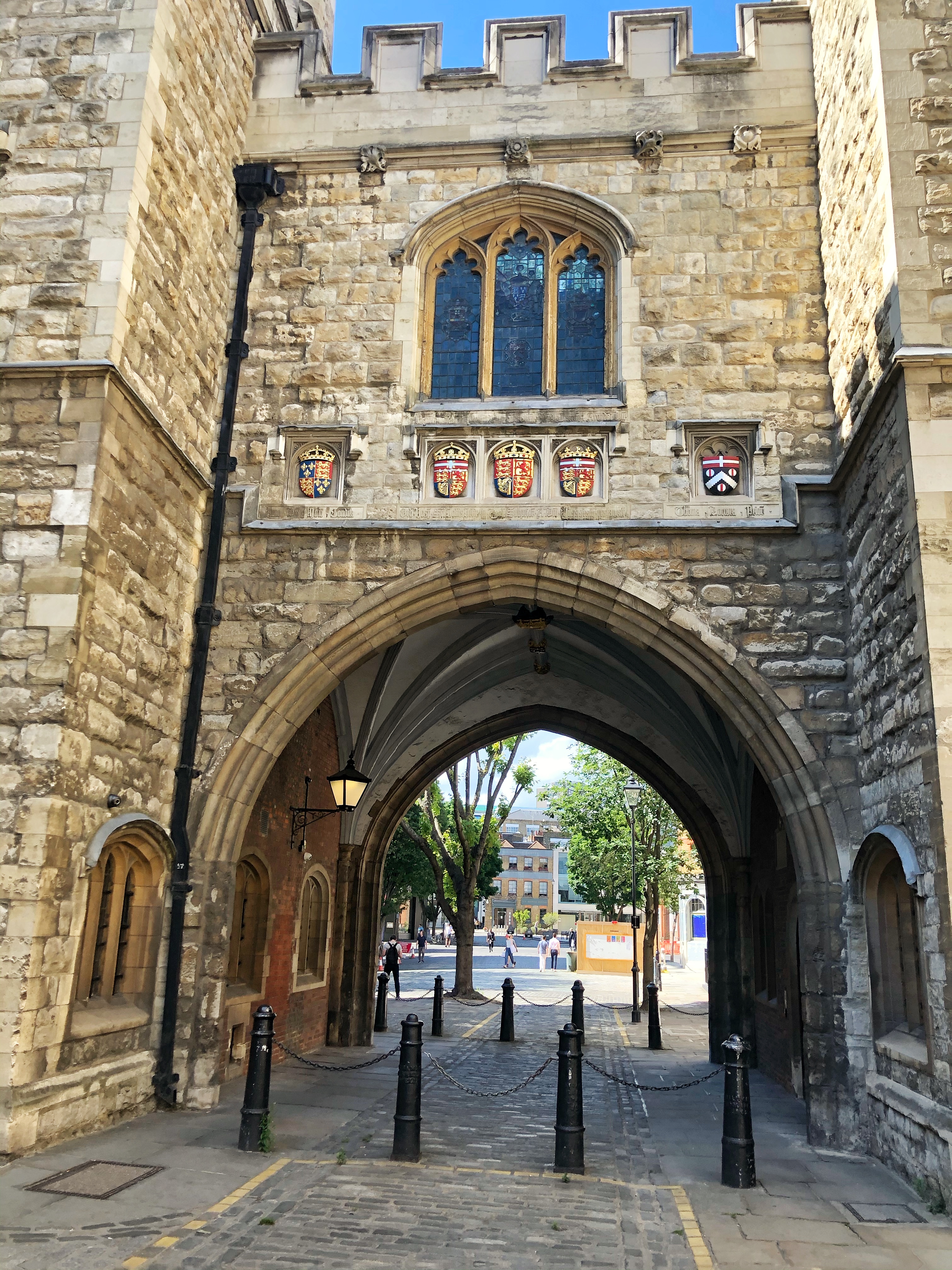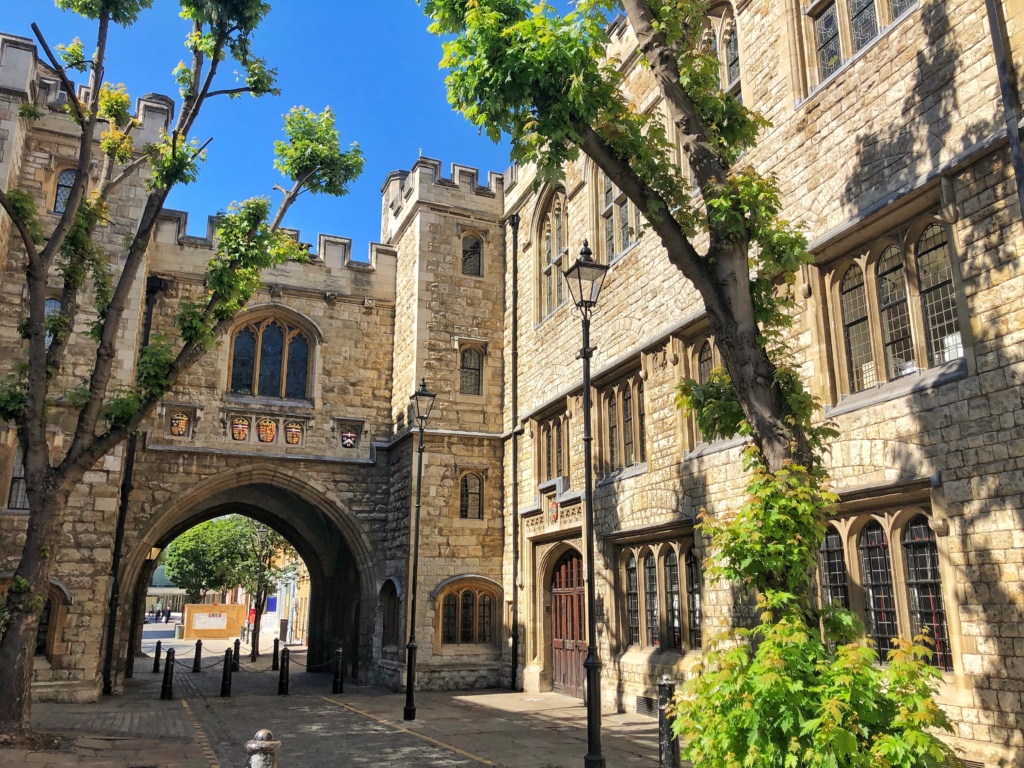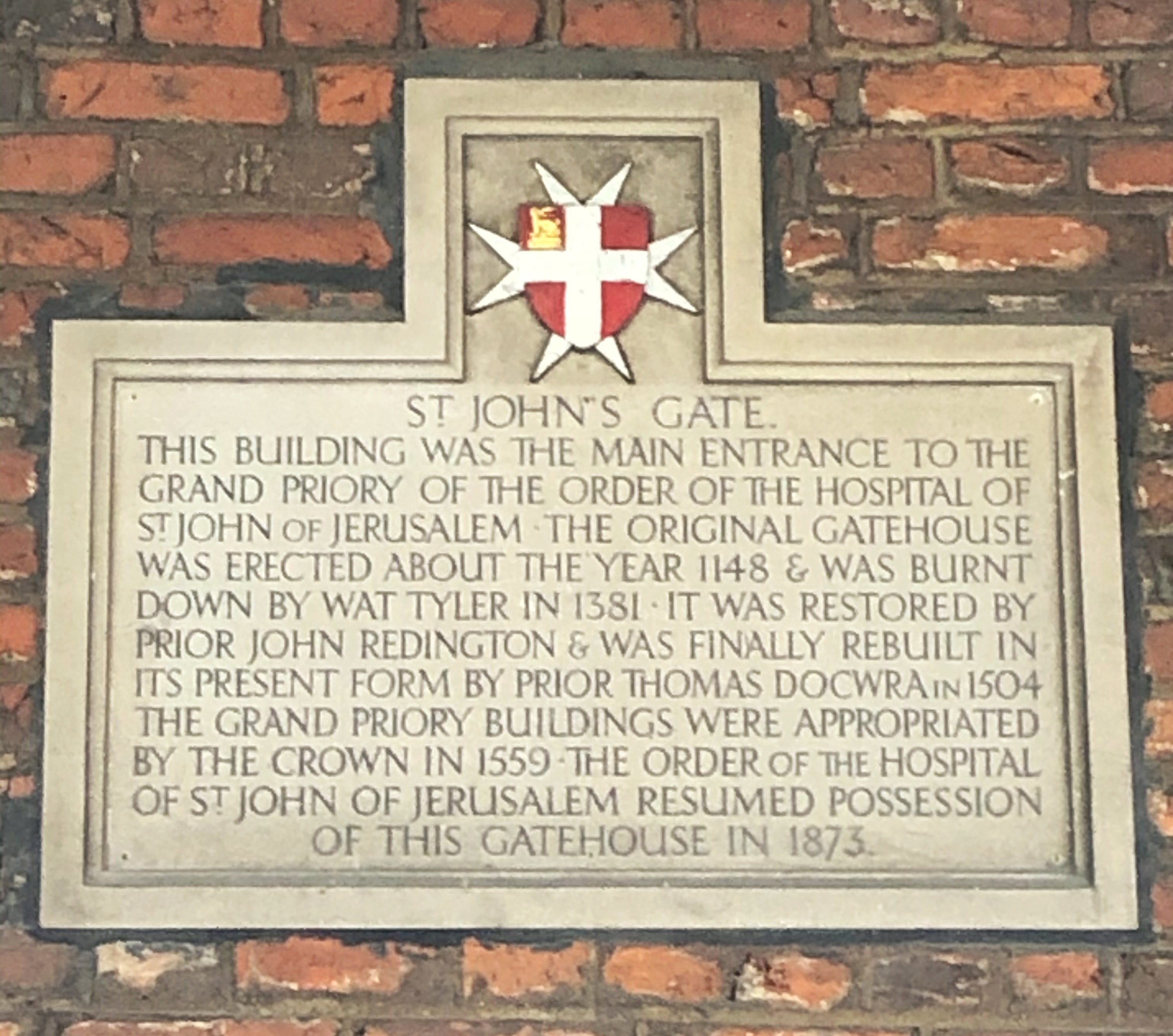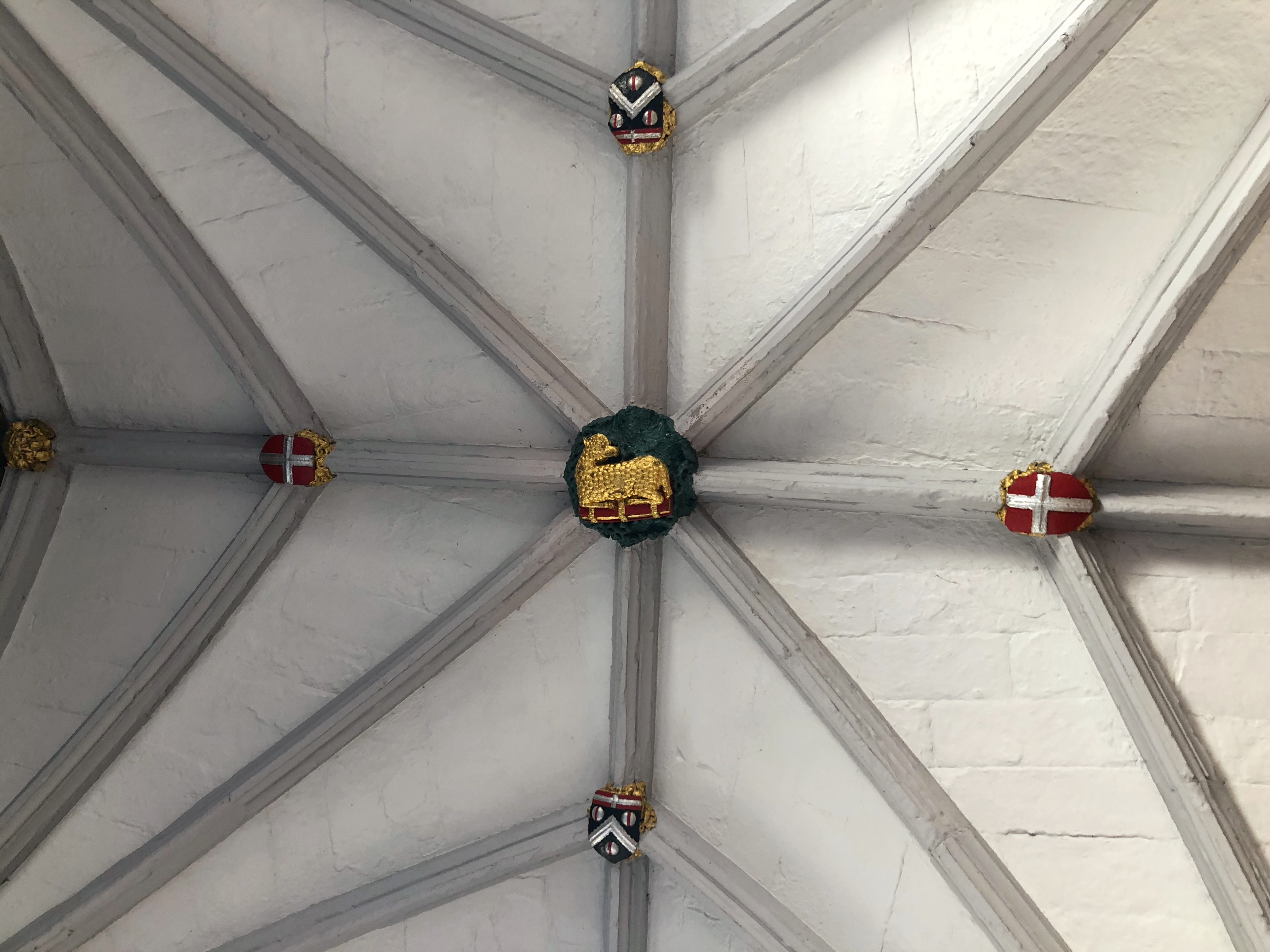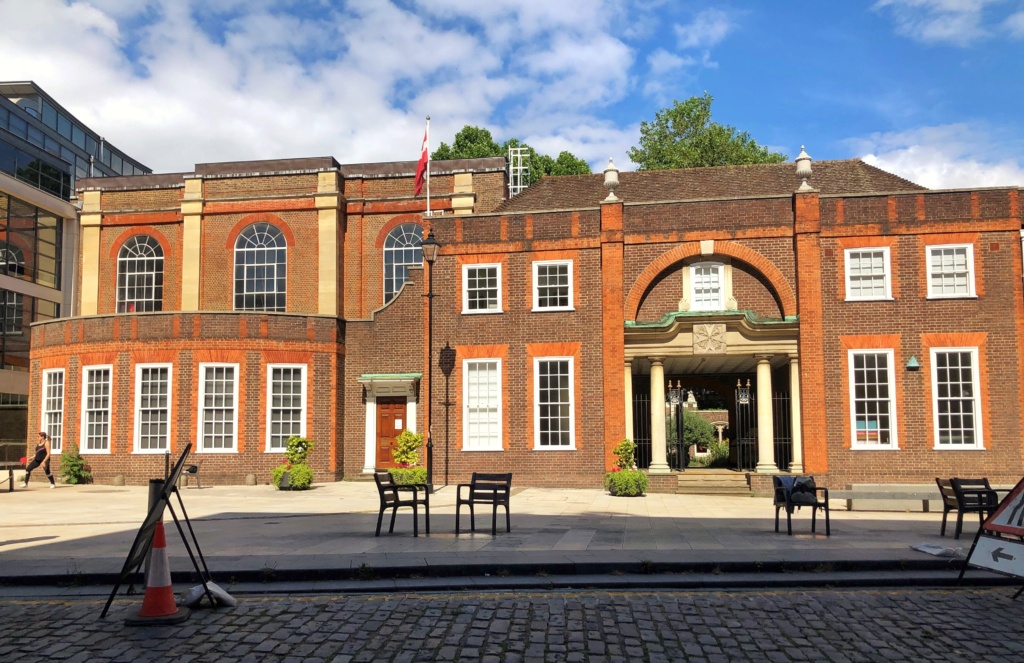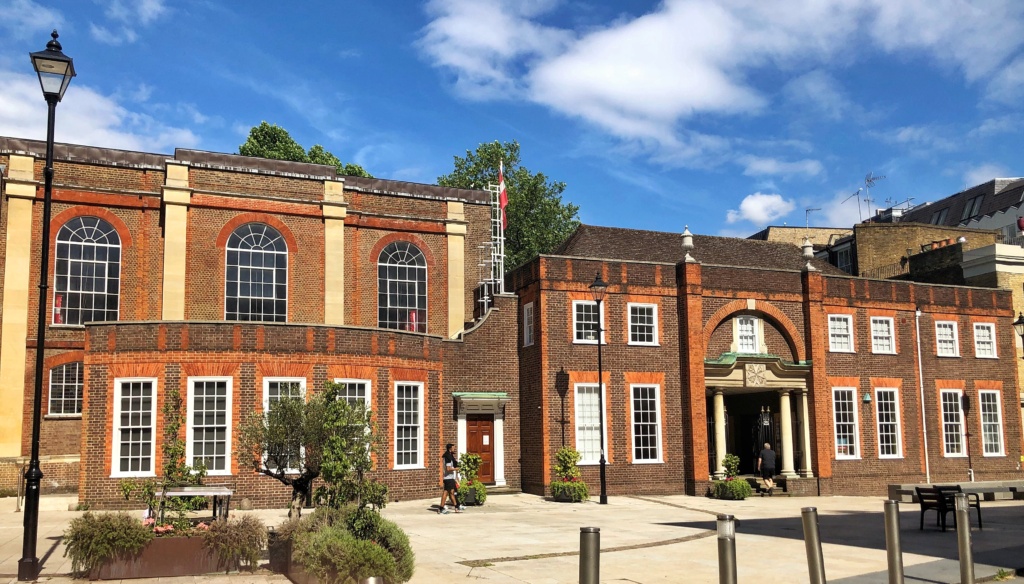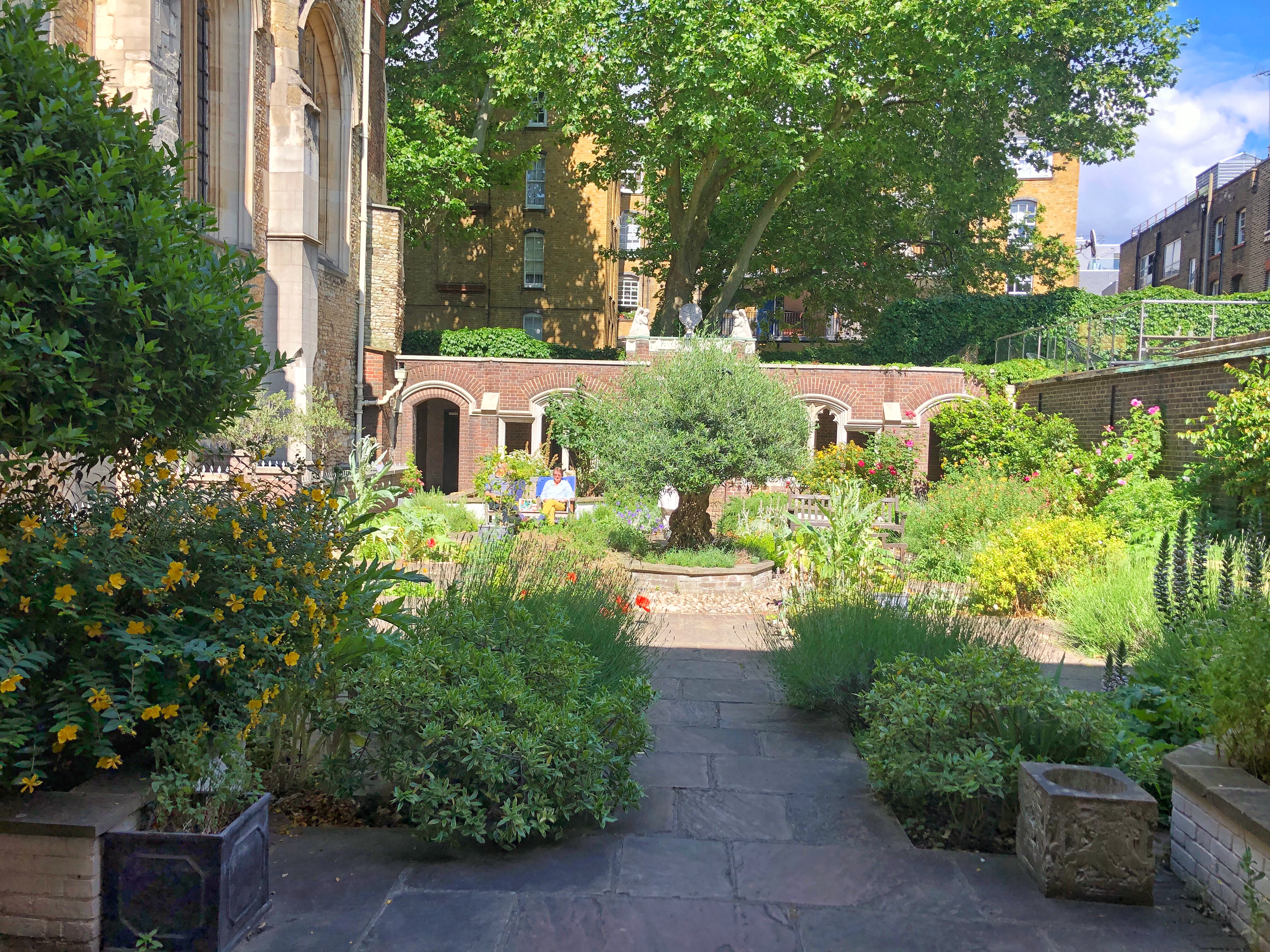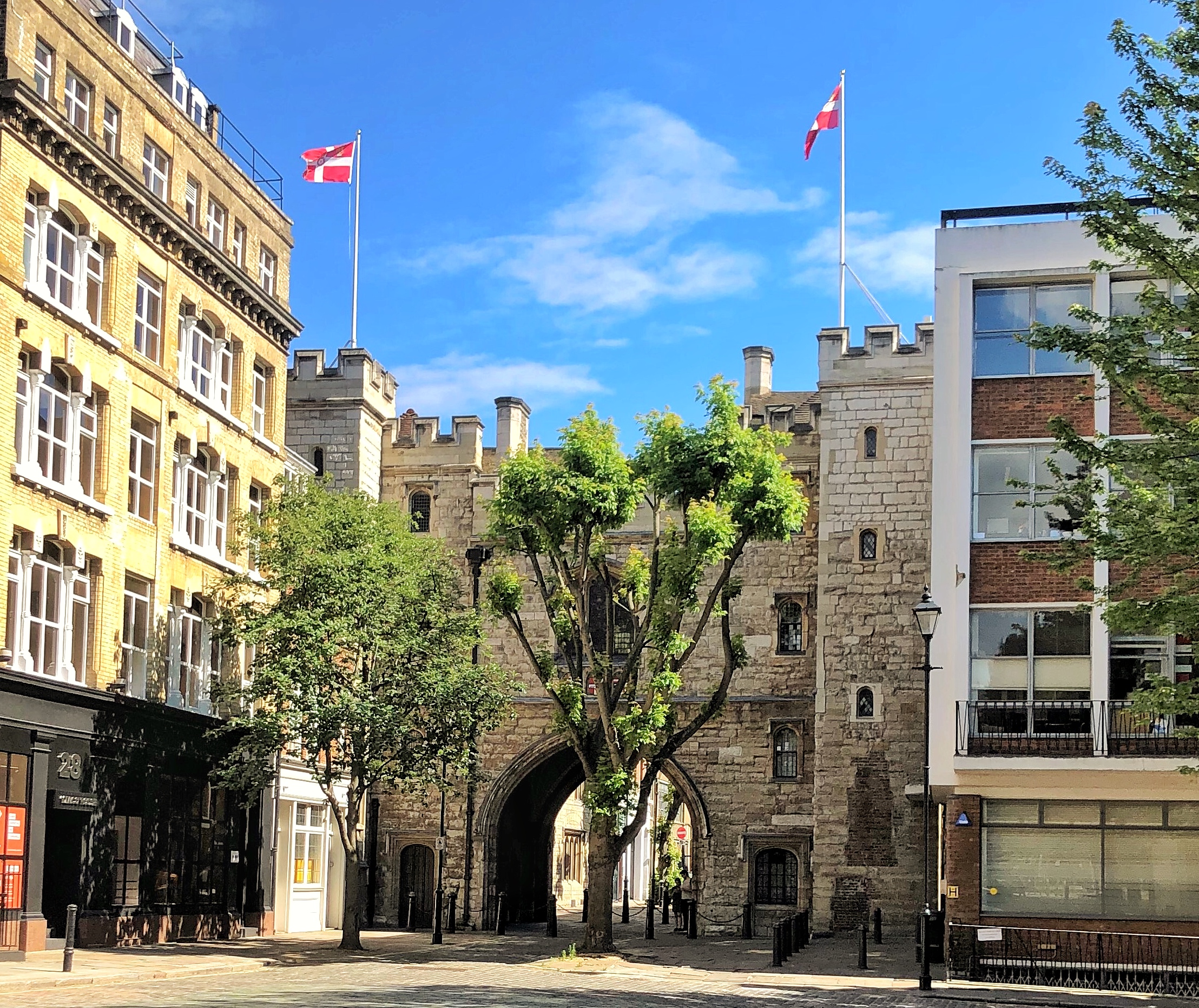Lockdown was newly eased and it was a lovely blue-skied summer’s day to boot. What’s a chap to do but get his bike out and head into the city to have a poke about? It’s what I did anyway. And cycling along Clerkenwell Road I saw a vision: St John’s Gate.
I’ve walked this way many times but have never knowingly noticed this splendid sight. How on earth did I miss it? It stands out like a sore thumb. A slab of medieval architecture in a neighbourhood of Georgian, Victorian and contemporary buildings. It feels displaced and slightly surreal like a Dr Who set. All that was missing are some Cybermen running around and an old-fashioned police box.
I went to have a closer look at the gate and got out my phone to google more information. It turns out that St John’s Gate turns is the last remaining part of the old Clerkenwell Priory which was founded by a Norman baron in the 12th century and run by the Knights Templars of St John of Jerusalem. The priory – which is a house of monks led by a prior rather than a monastery which is led by a higher ranking abbot – also had extensive lands north of Marylebone in the area still known as St John’s Wood, which it let to tenant farmers, .
The priory entertained several kings throughout the medieval years including Bad King John back in 1212. Perhaps because of these royal connections it didn’t fare well in the Peasant’s Revolt of 1381 when Wat Tyler’s mob burned it to the ground.
The Knights Templars rebuilt the priory in grand style so that it resembled “a palace” according to the contemporary historian, William Camden. It was completed at the start of the 16th century just in time to come under the beady eye of Henry VIII and his henchmen who dissolved the priory in 1540 and sent the Knights Templars packing because they continued to recognise the Pope as the ultimate head of the church rather than Our Henry himself. The Knights fled to their base on Malta which they controlled. Henry gifted the priory lands to his friends.
Somehow this one gate survived the dissolution and the subsequent years. It was used by several different businesses during that time including the printing house of The Gentleman’s Magazine, an office where Samuel Johnson worked, a coffee shop which was the childhood home of the painter William Hogarth, famous for his Gin Lane picture, and a tavern.
In 1873 the building was acquired by the Order of St John, which is an organisation that traces its roots back to the Knights Templars who had founded the orignal priory. They set about restoring the tower and refurbishing the rooms within. The stonework that can be seen today is largely from that period with little of the medieval structure visible.
This was originally the south gate of the old priory. If you walk north along St John’s Square, crossing Clerkenwell Road, you come to the old church which has become a part of the Museum of the Order of St John. It would have been at the heart of the old priory. I was not able to go inside as the museum was closed as part of the COVID-19 lockdown.
The gardens remain open, however, and I took advantage of them to sit in the pleasant calm amid a handful of other refugees from virus-stricken London. Two middle aged men chatted in low murmouring voices on one bench. A lady ate a sandwich on another. A young man read a paperback. Bees danced busily between the flowers. Just outside the door to the garden was a table tennis table and I could hear the ping pong noises of the ball being batted back and forth. A lazy summer’s haze hung heavy over us. It was a lovely place to spend some quiet time. As I sat I read more about the Kinghts Templars and the Clerkenwell Priory. Both fascinating, long one organisations. I did also, however, discover that the Order of St John set up the St John Ambulance Association in 1877, an organisation that is still very much alive and kicking.
I will come back when the museum re-opens.
